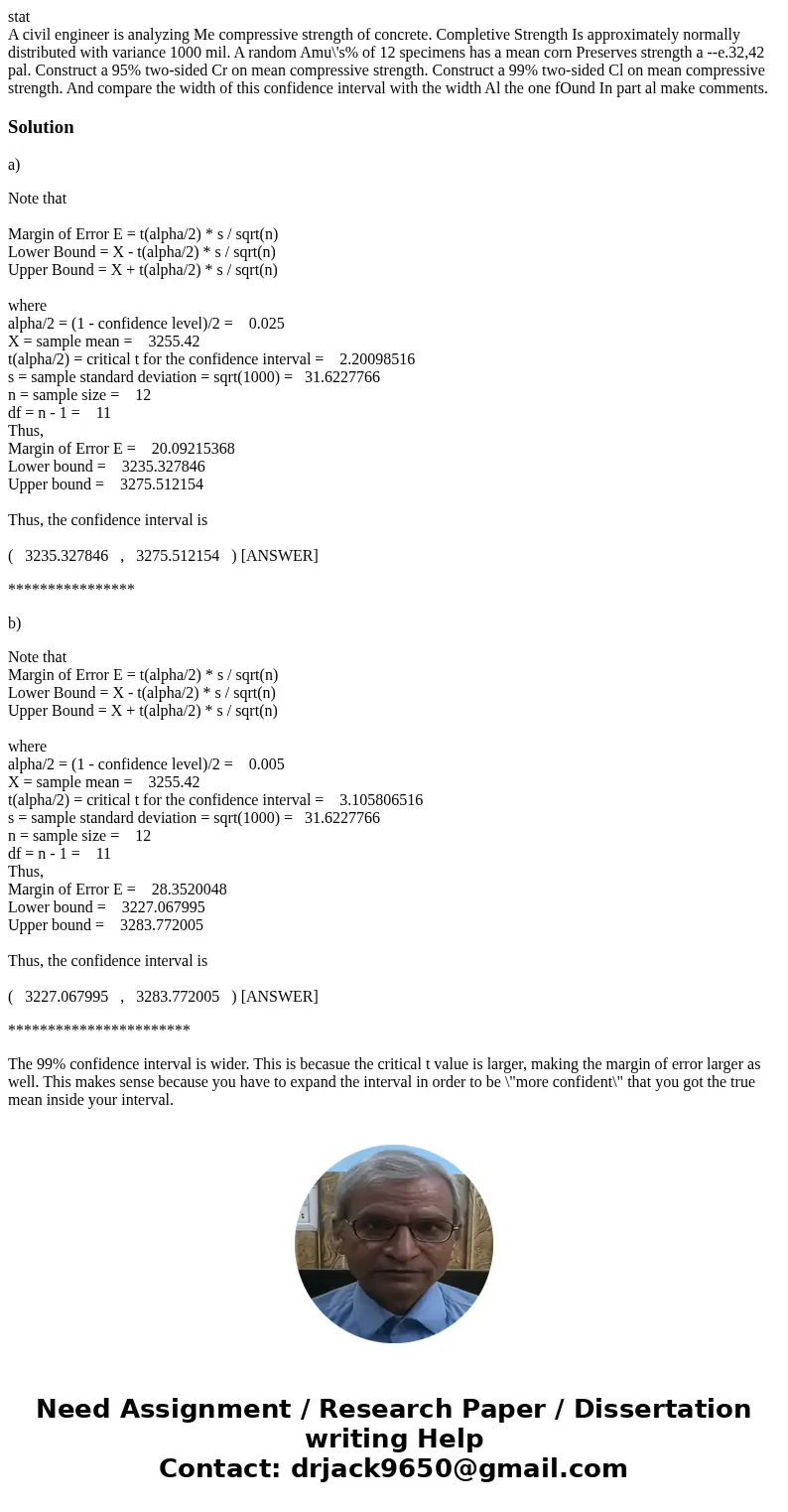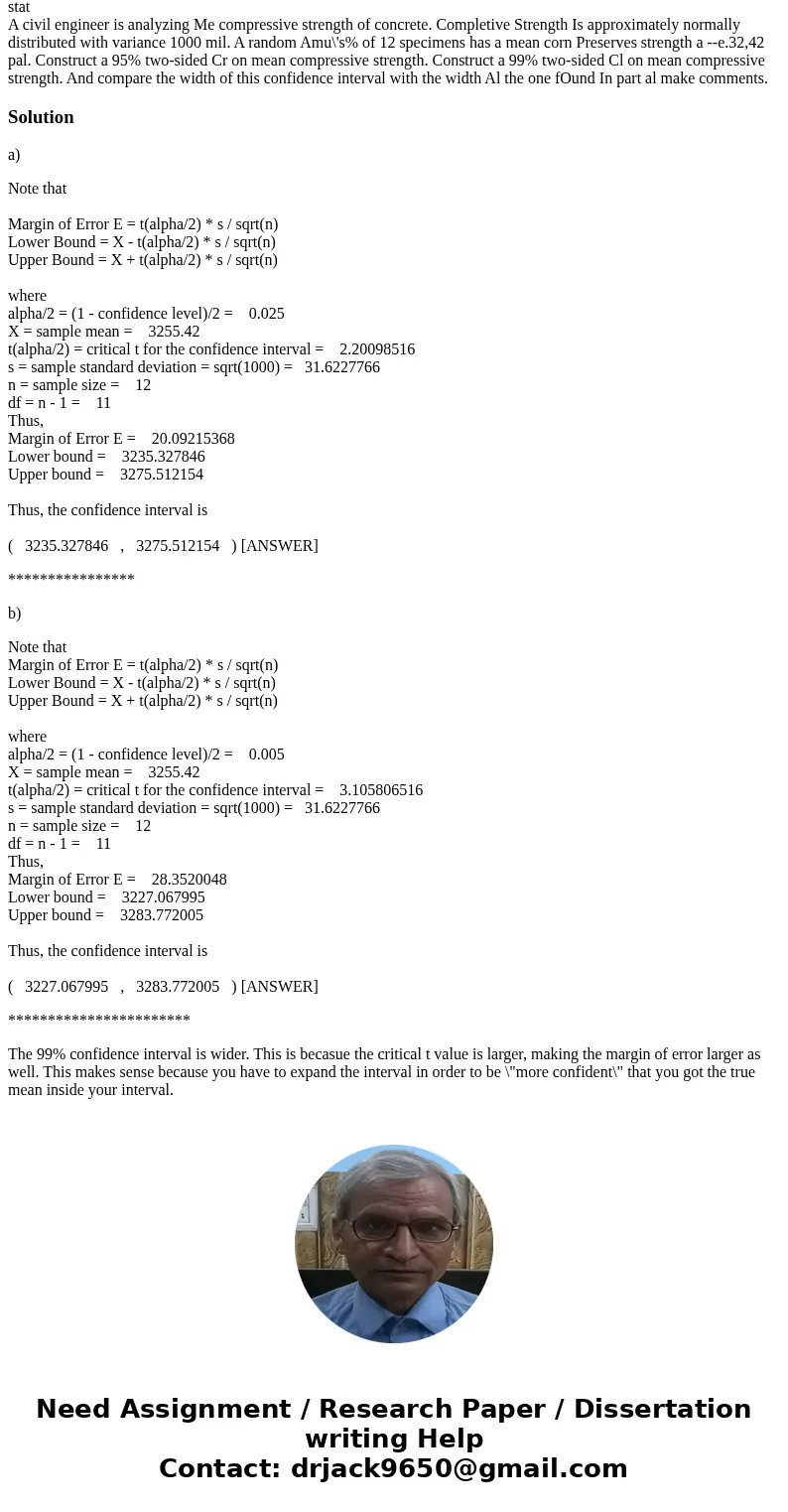stat A civil engineer is analyzing Me compressive strength o
Solution
a)
Note that
Margin of Error E = t(alpha/2) * s / sqrt(n)
Lower Bound = X - t(alpha/2) * s / sqrt(n)
Upper Bound = X + t(alpha/2) * s / sqrt(n)
where
alpha/2 = (1 - confidence level)/2 = 0.025
X = sample mean = 3255.42
t(alpha/2) = critical t for the confidence interval = 2.20098516
s = sample standard deviation = sqrt(1000) = 31.6227766
n = sample size = 12
df = n - 1 = 11
Thus,
Margin of Error E = 20.09215368
Lower bound = 3235.327846
Upper bound = 3275.512154
Thus, the confidence interval is
( 3235.327846 , 3275.512154 ) [ANSWER]
****************
b)
Note that
Margin of Error E = t(alpha/2) * s / sqrt(n)
Lower Bound = X - t(alpha/2) * s / sqrt(n)
Upper Bound = X + t(alpha/2) * s / sqrt(n)
where
alpha/2 = (1 - confidence level)/2 = 0.005
X = sample mean = 3255.42
t(alpha/2) = critical t for the confidence interval = 3.105806516
s = sample standard deviation = sqrt(1000) = 31.6227766
n = sample size = 12
df = n - 1 = 11
Thus,
Margin of Error E = 28.3520048
Lower bound = 3227.067995
Upper bound = 3283.772005
Thus, the confidence interval is
( 3227.067995 , 3283.772005 ) [ANSWER]
***********************
The 99% confidence interval is wider. This is becasue the critical t value is larger, making the margin of error larger as well. This makes sense because you have to expand the interval in order to be \"more confident\" that you got the true mean inside your interval.


 Homework Sourse
Homework Sourse